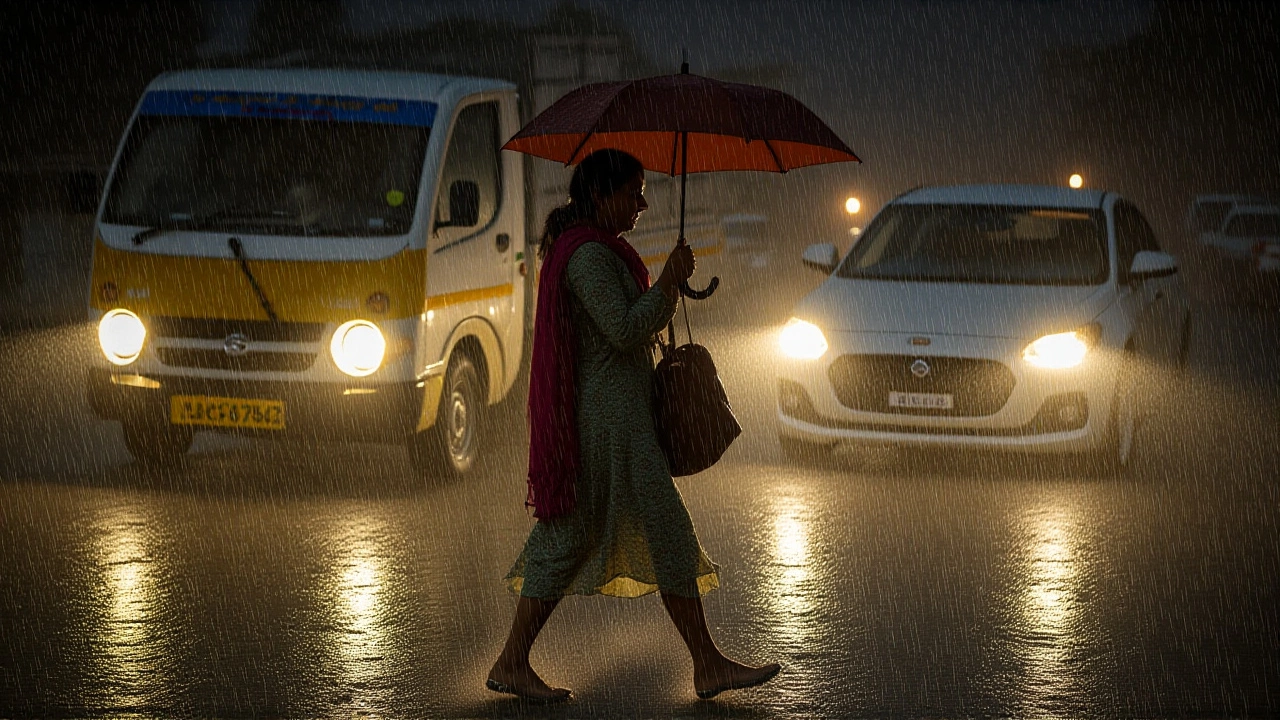Delhi heat: What’s Driving the Sizzle in the Capital?
When you hear Delhi heat, the term captures both the soaring temperatures that grip India’s capital and the intense buzz around its most talked‑about events. Also known as Delhi temperature surge, this heat isn’t just about mercury—it’s a marker of cultural, sporting and economic pressure points that ripple through the city.
The heat of a Delhi summer often fuels the fire of the Indian Super League, India’s premier football competition that draws massive crowds and relentless media coverage. Match days become a test of stamina for fans who brave the humidity to support clubs like ATK Mohun Bagan or Mumbai City FC. The league’s night fixtures, bright stadium lights, and roaring chants turn the city’s streets into a living scoreboard, proving that sports can amplify the literal heat with an electric atmosphere.
Meanwhile, the same phrase describes the boiling point of economic policy, government and corporate strategies that shape trade, investment and growth in Delhi. The recent Modi‑Trump White House talk aimed at a $500 bn trade target by 2030 sparked instant headlines, a clear sign that policy moves create a financial heatwave. When tariffs shift or defense deals ink, markets react, investors feel the pressure, and the city’s financial districts buzz with rapid decisions.
Sporting heat isn’t limited to football. Fantasy sports have exploded, turning casual fans into analysts who track player form, injury reports and venue conditions—all while juggling Delhi’s sweltering climate. This surge mirrors the city’s obsession with cricket, where a single innings can raise heart rates faster than a heatwave. Whether it’s Heather Knight’s unbeaten 79 in Guwahati or a Ranji hopeful eyeing the Hyderabad squad, each performance adds a layer to the capital’s competitive temperature.
Beyond the field, the digital realm contributes its own heat. The Gemini Nano Banana AI trend, which transforms selfies into vintage saree portraits, ignited a privacy debate across social platforms. Experts warned that the rapid spread of such AI tools could overheat user data, especially when the technology layers invisible watermarks like SynthID. In a city where smartphone usage spikes during summer evenings, the balance between creativity and security becomes a pressing concern.
Government innovation also keeps the thermostat climbing. Jharkhand’s new online e‑lottery for liquor shop licenses, touted as a transparent allocation system, showcases how digital governance can generate public interest—and a little friction—across state lines. Delhi residents watching the live draw feel the same anticipation they get when checking ISL scores, proving that policy experiments can create a shared heat of curiosity.
The automotive market adds another layer of heat with Mahindra’s festive-season SUV discounts. Offers ranging from ₹50,000 to over ₹3 lakh cut across models like the XUV 3XO and Thar, prompting a rush of buyers seeking cool rides in a hot market. Such price slashes not only stimulate sales but also highlight how consumer demand reacts to economic temperature changes, especially in a city where traffic congestion already feels like a sauna.
Academic and grassroots sports also feel the surge. The All India University Games open doors for student athletes, while Hyderabad’s Ranji roster ambitions illustrate personal journeys through Delhi’s competitive ecosystem. Whether a college sprinter tracks a personal best or a cricket hopeful shaves years off a dream, each story reflects the broader narrative of striving against rising odds—and rising heat.
All these threads—football fervor, policy pivots, tech buzz, market swings and athlete ambitions—intertwine to paint a vivid picture of Delhi heat as a multi‑dimensional force. Below you’ll find a curated list of articles that dive deeper into each of these hot topics, offering the context, analysis and on‑the‑ground details you need to stay ahead of the curve. Grab a cool drink, settle in, and explore the full spectrum of what’s heating up Delhi right now.
